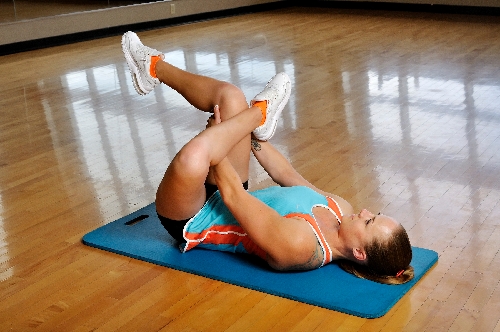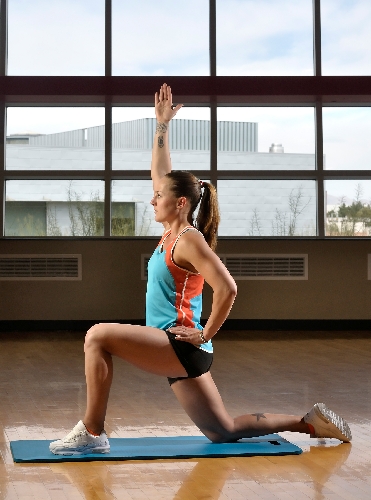It’s OK to check out some hips — first theirs, then yours



It’s a hip day! So find your favorite hips and watch closely for today’s pointers. There’s no need to be shy when evaluating posture. So really, be looking.
Observe your hip model from the side. Are his or her hips turned forward, backward or are they in a neutral position? Neutral hips will lead to good posture and correct form when exercising. They do this by allowing the spine to be in the right position, which lets the body recruit muscles properly, allowing for proper movements.
If the hips or pelvis have an anterior rotation, it will look like the hips are deliberately being turned backward. This gives a drastic arch to the lower back and puts the spine in an unnatural position. Having the spine in this position will lead to injury when loading the body down with weights. It also affects the body’s muscles. The hamstring, attached to the pelvis in the back of the leg, is constantly being stretched when the pelvis has an anterior rotation. Conversely, the hip flexor, attached to the pelvis in front of the leg, is in a contracted position.
If the pelvis has a posterior rotation, it will look like the hips are deliberately being pushed forward. This takes some of the natural curve away from the lower spine and can lead to slouching. Starting an exercise with a slouch will eventually lead to injury. A posteriorly rotated pelvis also has an adverse effect on your muscles. The hamstrings are constantly in a shortened position and the hip flexors are stretched.
A small pelvis tilt may sound insignificant when looking at the body as a whole, but it can have a more prominent effect over time. I see long-term effects of bad pelvis position almost every day. It starts with the hip flexors being a little tight due to regular activity. Not bothering to stretch and condition them can lead to the pelvis being pulled out of whack, and it rotates anteriorly.
First, the hamstrings become sore because they are constantly being stretched. Then the lower back will start to hurt. To compensate, the upper body starts to lean forward to relieve the lower back pain. Next, the knees start to knock together to support the body’s altered position. All of the sudden you can’t walk long distances without your knees and back hurting.
Neutral position is the best position for the hips. The spine likes it and the muscles do, too. It keeps you standing up straight and structurally able to support loads. Whether you’re loading your body with weights in the gym, carrying groceries or playing with the kids, your hips will be there for support.
If your hips are rotated either way, here are some stretches to help bring them back to the neutral position. These stretches will help relax the tight muscles that contribute to altered hip position.
For hips that are anteriorly rotated, you will need the hip flexor stretch. For hips that are posteriorly rotated, use the hamstring and glute stretches.
The best thing you can do to ensure proper hip position is to be conscious of them during the day. Are they in the neutral position when you’re standing in lines or walking through the mall? How about when you’re carrying things in your arms? If you spend the time now to make neutral position a habit, then posture shouldn’t be an issue in the future.
Chris Huth is a Las Vegas trainer. You can contact him at 702trainer@gmail.com. Before beginning any exercise program, consult your physician.












